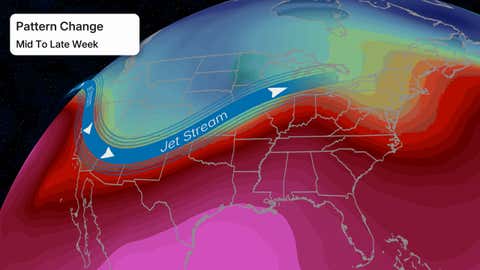How the Storm Prediction Center Protects Communities During Severe Weather
When severe weather looms, millions of Americans turn to the Storm Prediction Center (SPC) for its trusted forecasts and warnings. From tornadoes and hailstorms to damaging winds, the SPC plays a critical role in safeguarding lives and property. In this article, we’ll explore how the SPC operates, what its warnings mean, and how you can use its insights to stay safe during extreme weather events.

Understanding the Storm Prediction Center’s Role
The Storm Prediction Center, part of the National Weather Service, is responsible for monitoring and forecasting severe weather risks across the United States. Its team of meteorologists analyzes atmospheric data, radar imagery, and computer models to issue timely advisories. The SPC uses categorical risk levels, such as “slight,” “enhanced,” and “moderate,” to communicate the likelihood and severity of upcoming storms. These forecasts inform both emergency managers and the public, helping communities prepare in advance.
Recent Outbreaks Show the Importance of Timely Predictions
In May 2025, the benefits of the Storm Prediction Center's work became especially clear as severe storms threatened the Plains and Midwest. According to Fox Weather, the SPC and its partners tracked a seven-day severe weather stretch, alerting cities from Chicago and Milwaukee to the Dakotas and beyond. Their timely updates included warnings for large hail, damaging winds, and the possibility of tornadoes—a threat that materialized for many communities.
How SPC Warnings Keep You Safe
SPC bulletins are more than just forecasts; they’re action plans. When the SPC issues a watch or warning, it is vital to pay attention and have multiple ways to receive alerts—such as a weather app, NOAA radio, and local media. As Weather.com reports, areas under a risk level of 3 out of 5 may experience hail as large as golf balls, straight-line winds, and even tornadoes. Fast action, like seeking shelter immediately when a watch or warning is issued, can make all the difference.
Regional Highlights: Midwest and Plains
The Midwest, including cities like Milwaukee and Madison, frequently faces enhanced risks during storm season. For example, WISN highlighted southeastern Wisconsin’s severe weather timeline, emphasizing the SPC’s “enhanced” risk forecast. This information helps residents know when to expect storms and how best to prepare.
The Science Behind Severe Weather Forecasts
SPC meteorologists use advanced models and real-time observations to predict which areas are most at risk. They track atmospheric instability, wind shear, and other indicators that contribute to severe outbreaks. By analyzing these factors, the SPC can anticipate events up to a week in advance, allowing for early preparation and minimizing potential harm.
Stay Informed and Prepared
Severe weather can strike quickly. Rely on the Storm Prediction Center for reliable, science-based guidance. Signing up for multiple alert systems and following local officials’ instructions are your best defense.
For the latest updates and detailed storm timelines, visit resources like Fox Weather’s severe threat coverage, Weather.com’s forecast updates, and WISN’s regional advisories.
Conclusion
The Storm Prediction Center is essential for helping Americans weather dangerous storms. Its timely forecasts, paired with personal preparedness, save lives each year. Stay alert, trust the experts, and always have a safety plan for when severe weather is in the forecast.